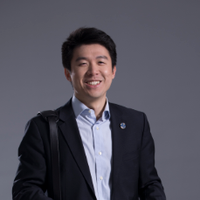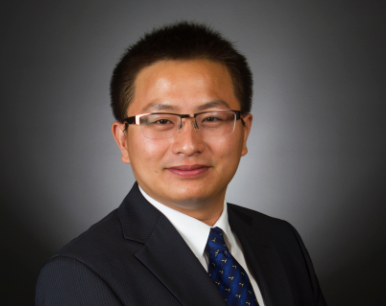The beginning of Yuji Zhao’s
research path on GaN is associated with a world-famous name: Shuji Nakamura,
who won the Nobel Prize in Physics in 2014 for his invention of blue GaN LEDs.
However, the performance of GaN LEDs is still greatly limited by the challenge of
“efficiency droop," which refers to the efficiency roll-over of LEDs at high
current density. This has put significant constraints on LEDs’ high-power applications
such as automotive headlights and projectors. After arriving at the University
of California, Santa Barbara (UCSB), Shuji Nakamura announced to the students, “Our
next goal is to make the brightest LED in the world.”
At that time, Yuji Zhao, who was pursuing his Ph.D at UCSB under the guidance of Prof. Shuji
Nakamura,
was inspired by this exciting goal: to invent the “droop-free” LEDs and set a
new world record for lighting efficiency.
Research on “droop-free” LEDs
requires innovations in material science using nonpolar and semipolar GaN. Yuji
Zhao discovered a unique GaN semipolar crystal plane with promising properties and
particularly high indium incorporation efficiency. Eventually he was able to
fabricate an LED with world record efficiency for lighting applications on this
semipolar GaN crystal plane. This work has impacted both the worlds of academia and industry. It was awarded the Most Cited Article of the Year
2012 (cited over 100 times) by Applied Physics Express and Editor’s Pick of the
Year Award from Applied Physics Letters, and was featured in over 100
international news outlets in over 6 languages, including Science, Nature
Photonics, Optical Society of America (OSA), and Compound Semiconductors.
Six year ago, Yuji Zhao joined
Arizona State University as an Assistant Professor, and established his own laboratory
to conduct research on GaN power electronics, high temperature circuits and
sensors, and photonic integrated chips for quantum applications. He has made
seminal contributions to these fields, with over 140 journal and conference
papers, over 40 invited talks and seminars, and more than 20 US patent
applications. Additionally, he has received several prestigious young
investigator awards from ARO, DTRA, and NASA. In 2019, he also received the U.S.
Presidential Early Career Award for Scientists and Engineers (PECASE), the
highest honor given by the US government to early-career scientists and
engineers.




